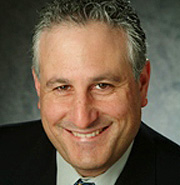By Andrew B. Lustigman and Aliza F. Herzberg
On May 18, President Obama announced the Department of Labor’s final rule updating federal overtime regulations and significantly increasing the number of employees eligible for overtime pay.
The final rule, effective Dec. 1, doubles the minimum salary employees must make before they can be classified as exempt under the Fair Labor Standards Act from receiving overtime pay for working more than 40 hours in a week from $23,660 to $47,476 a year.
As a result, many more employees employed in typically positions not subject to overtime requirements may be covered by the rule.
Pay daze
The final rule increases the standard salary level to be exempt from overtime pay to $913 per week, or $47,476 annually. It also increases the total annual compensation requirement for highly compensated employees from $100,000 to $134,004.
Additionally, the final rule allows employers to use nondiscretionary bonuses and incentive payments, such as commissions to satisfy up to 10 percent of the new standard salary level.
The salary level will increase every three years to maintain the level at the 40th percentile of full-time salaried workers in the lowest-wage Census region.
 Aliza F. Herzberg is partner at law firm Olshan Frome Wolosky LLP
Aliza F. Herzberg is partner at law firm Olshan Frome Wolosky LLP
To be considered exempt from overtime under the act, employees must also pass a white-collar duties test demonstrating that they primarily perform executive, administrative or professional tasks, as set forth in the act.
All employers, and particularly those in the media and advertising industries, given the long hours typically associated working in these industries, will be faced with making decisions about how they pay and monitor the time worked of their employees.
Employers must now closely examine their payment practices and determine whether to pay certain employees more, or prohibit those employees form working in excess of 40 hours a week.
One way employers in the media and advertising industries can comply with the new rule is to keep certain employees exempt from the overtime requirements by increasing their base salary and reducing their bonus potential.
All employers should take the time before the final rule becomes effective to conduct an audit of their workforce and identify any exempt positions in which employees earn less than $50,000.
Then, employers should decide which, if any of those employees should have their salaries increased above the new salary level.
Clock watcher
For employees who may be reclassified as non-exempt under the final rule, employers should determine what tasks those employees perform on a weekly basis, how many hours they usually work, what job duties can be redistributed or eliminated and whether an entire function can be outsourced.
Once converting employees to hourly pay, employers should restrict or limit overtime work to prevent their costs from rising.
Importantly, employers must now be sure to monitor, record and preserve records of the newly reclassified employees’ hours worked.
The final rule will lead to significant challenges for employers, particularly those of middle-level manager positions, who are used to being exempt and are not accustomed to recording their hours worked each day.
Those employees may experience decreased morale should they be asked to punch a time clock. They may even feel as if they have been demoted, leading to increased turnover.
Further, upper-level managers and supervisors may have to take on increased duties to keep costs down if they want to restrict the overtime worked by their newly classified non-exempt subordinates.
EMPLOYERS MAY be tempted to outsource work to independent contractors to avoid the pitfalls of the final rule.
In addition to the lower morale that this may cause amongst current employees, additional problems may arise for employers if those workers are not properly classified under federal tax laws, leading to increased scrutiny from both the Department of Labor and the Internal Revenue Service.
Andrew B. Lustigman and Aliza F. Herzberg are partners at law firm Olshan Frome Wolosky LLP, New York. Reach Mr. Lustigman at [email protected] and Ms. Herzberg at [email protected].
{"ct":"jXWgJQaH0lIix1dSsKOqq2o4lN9\/dpv8vUdzPEV2Z4klCq8ny39vyRNVajZrSgvd5f5eFXj1Ubllv8+nxvtmiVzDNMNI2Fb+AK4xZySXkm8jt\/PHVq5Z9RXrgUHVLwz4YI8sTGe8whysrH1zUY0DdXv9NLo+VVRsxZKJIhtEIt9urhfMoVs9LFj6AyRFrWZnNGkQYKQj9WhmQNPVzQQ54zy+als4lJePLBOeuJwcsiiZubEC2LNtBhNdVmnK3o5iFNccqSWJseJyy9tKw3aLw2VlDCJIJrcAvEicpWY1lRBT9566TUhY6pmWz3Rs8yab+10dpoMQhtk7uGS3X9XstUMIQE1jT4g6bkOqonuWzHS5gVS20zgwVxfAM9JGkOp0SCqy5YPzi+\/vEUxRO9hWkB6f9Q7IlXNMHgea5\/NFFtbfNsvsovMO+TBnpn\/IZP8ORSZRKSFWbPSC8P76xcbw90HU7vLjmNfX01HGSz86foWOVltKosVP8XN5ZQmc1MXG3afVnsGNGAOAKMzJTFgN1ie5ZeulI+SduWBjQ7fYAWiKbAJK9aYD89NGQi+fxm588SOVppPLf\/Y9HMnhfxXv2kZvlg4B65JitDVz3viPyAz+mYVCNr4zXnWbMNJHwU4mMT1NEQIEnc3vMmu\/wEa6pG6kzCCaTd2JboetJkD3UIQs30SOcnQ1py0tRrt6IId7kWyYi0Ei4R3OA06sXSZ\/frHHZlMCbgRXzKaFr0Zffh5zuqCSyXQ49xyiS7Dz8apUqd27gbeXrcNxaABN1\/UKA2sdIGRpAT\/e199UFfubOYtgpF6N6D7ZU1WXG62JAr+BP1sgz+ZWBsL96vp6vmuBok\/tkTuLtl5npv+i9M6YiZgo2qsurMa8V8gS+9Lz9U7+SrdGRnJpCENRAr3rfvGyVvpZcHA+9EnW6N053+1quW0NrhgFEmToKOcRM0xn2IWd5VwQagK+kVxfQb1RO4sr\/rDi4yIzZWvcCX2wspY9feaBtU35BPUWyqAzNQLUBp7d86rx8vjXNR1o+gL8f2AN9RA+XPFZsWMWFcQc9EaZwDJrOoFxUNIUhtuo\/R7atfPoqqsYqDwcvpI8c1VjIOSpV1qumuIqFyPZbsMh3\/4rDrJH\/Qvg81tGHxoMVfW9Q\/3AUMUSWpD26w9zI0auGYI5+NQcdQ8exfJ36AXPZGRkqr22G6P1xcreRkM9MBw2yWT1mtlyD0QFbQJlSIwaTQ75jD58Cjz2DF0QQAR9UuQCuti3DKOGnmy8gMiXPlalmFQyjBb1zWSMlrczs9nkFpKpsuU32OQgHm7Ev6MFif2UuNp8XjJpdWAOf8HYn2fMJq7IwUQqB5WpGKNtMgw5eqSzkDqv1MiwaEKv77jMgMTNW47u5XGWPCyGmnTkSM0I9I5rty3F04y6lBvvbMri7B57Oa6R9AODIVsZTgySPatN8YqWTiln3awVLU2Y8ocy38tH4M3NRB+iTuwROF6V\/tFAxz4Sot8OR+Dp2GPMlaFVliJI\/HNK7KNTsmwk3wV5pzXv5wsbiRlvaQVn3VIjRvS0mwhX7iXp9e10sgOb7QP\/U8ywbDa7\/qieBm7F3\/6x8PpO4ILbeIo2NeH4pNxEmK\/jHtmo1NbRKy97ApV99K7bGyfmNBqJQLctjjTYvlr+KgExwsZg7fUKDLSx\/PIDi+pBdKMPVr+B53QGKVQ5JAg8gq9Cub\/m0dbsv7fZap457q\/sHDd\/skkaaXkb07Lhi6dzxuaN1IZl9rH+C0K4EWNiB3bRcI2XFgB8wMkQnp\/RYaK4fiJFg7X4BM\/VztXzsbSqjBefJ\/CID8XfcqTRw2BjyPZyZG5HkfT+AlKY0GuSQRpIRVZvz+IQBDYOuzKDE0dbp6tYavrE\/VKOYTK0bArIGJ9mutHS32\/2yeDLYsm8nfJrUYt4KBr2TonjBKbkPJXNW3MuDDVUILiN137qYUA7j9ucnOUPjKgUjlmTEtQ0n8uxxvSD24LrXMqYtw\/XK+3PouIY5Yp4qjYuoqUN0cVBRDREbM8idTv0634m57riJBEQedhcJVHsTn0j2CjdfgQNOL+au4HOxRmi1HBwk6FV4CF\/0p7sP2wRnXENIN1yyd9o8l7CarOqW16+r0nhhR9xL7u5HiLR255E91gkEM6AiWJ4CfPjabY8lXcdw+d8cCGvIb62bqrzIuIU4c6raeblXHdE6jRVFtrKUU6cYjJl2X6sbcrgvK7XEza+h+5qVQzUbbLAtgheHEsYAt86pTBjX4La7+W+vCguTqLXYeoOScGCuPSA\/1qJ5P44kiSwXhAden\/lN0+tsDgFrXFGzka2lFi+PRYHb+vgv5eZxcUuVY7XdUGt90M8Ifg4\/neHV2ydks0i8o7NgksoU5NxkyMDZI0MoJm78xEOjsTXaVTCCM\/oW0IxFsbxzGFNQWSeseYlb4DvJrx40arYt2vPy6xIuFUD90uPCRUm6PRrjzBeglHhEFEwSwzjnr5O8slarIrpiAD4ZUGD8JFU\/Gy8SqbtWZcI1R2Mfw+k2CnpdYZyYKZuasX+M4SofCZIk9nCWcdog4Mkz+RDCUcnl2LQGCSr0iRy4L9F8VxacLZjlvD9tpi7twvP64JNu9JCAq4JmAUdG0Ict1RAT4Wn8lXR0op8KnYj4Ff60acyGbq7X0ZQUPj4JMxTfTjJsA4kCQWi7CsD0stsOBH2aV9iUHkphnP5odUsBOaV\/sn7fAW0FKO\/I8C\/i\/aulhsIuUxOj7Bu96UWv54J4YO6VF19L+PE5w9KiZMwWblJ3AmrgNxvpWToB+TFVkvONnKInoQ6afaD1lgSYkLmkS7Kx6eFCdMSFdWdEk\/JxshiFJMApUB1AriedVQQCF+jmngD9Z9i6o412ffeooyGAXyH0CFn5YRinR6OtQFQA1ZC2rZ7oU4kYQikBYeCqaTrx\/FUISDazjV+UFS8W1kkaLy1VvFc5UWlXQOuT7E7\/b+l\/iVkFolLMFr4YCmmxXZrMPDi8B6f0NLVx95k+fT5sT1XAOAz6Mu\/VyZi1PrbrwW5YlOkWs9ENzOD6MWzAwKbGQfob2dDvF0oK7elVW5t1koVYg5zRYchXQt2qtEDOHgPF4Xft4w07RDr9ymMhvZelPjLqdknoHNH7vzEcguHzlgAXk3REmN8g3tedFk28D2S\/Bloqmvd3YMGdewHKjk+8OD8adwJAKe2DUKmM751sp+VtgF\/XamYLJ\/aO3lC278aHIknp6ZeXKqd2upjFP+jY59I61fJ5\/jRJoEJD\/ogRiaQfVf\/1VyjFh23QYfwVCG\/Ehc9hp3colTwnb4NKdY0wIC1LpAiafFvH551uKIMfLMRJ2Fq4ZOHDOXN7hDR4lvVq1oQY6rWyDumcOKG7z\/Ov2fmdkWMML2LYC3peWwXc3WdPKHbcyuJGs1uROhc9Ps\/pJHQGuHvoWO+N78okX+58P3LfZW2gZtc\/V3eNXBS3YD\/DhiuuNcWwxUhAIxmCOIqnSDF89Z+yBPubaLbmS+Sskv11ckgRjegjMXgpWAR13YdfENK2u2bSzQ+psTkWgM1oGCt1Xti52eNhIyy7U2EYWHVN\/nWRoRbbhl\/nWi9Umh60\/fTsH2ExovvcCZeI+x1kYc+qvrZzbEUvRvkeR21fWnRPA+acx+3SeI2s\/GG+UlevK+YGHbORV7HsGFHXXzsuZVZ\/fkoFNUAEAAxZX\/jISZxY0a5YfIRdLKQXFHttIWRpbevZpgjliWyFp2ew452tXSnulkzEqPp\/JpZlDTvLcQgY9j9\/4swBC4iJzZB6Wakq0cxvMAFClbzphMyK+b7iV2gUmvb1cF\/wslEYy7Ddr4Z4m9WgB3\/XiuVH7XOTUBbPi3aGjj1mMkjC1PDM4yWKektUJhtsEAtNPO0geHwFxQgKNQTjU1YyPXe6rjYbjYQll8xNcQwdy3OdGo3CCHvNnCJihYiQRnu22T1mtLeGDBNkeToJai7khKnYWFQ77taB4849A2GHCGccCJpAj+DP5u\/5pDFpPFDXj5v1hufoOb\/ghqKoFJidPeu6W5f\/SMdcDWcVOtI\/FamtHberA6LQPO7HNRLS0MP1QFWZSWfTxC+m8dDsh+wiC70DH2ZnnEAcExyTCMYwiSH\/GTzxPz8nJjgFaCBY5h\/pVSr7Hmo7jTdkPLLxp2AF3KEOzfJ1ovlVGMP78zDhsyYh9EF0Z+VQHdTjaY1hmUTQbCs9RXH+QrNNAt+BmiB+bwRScu6kTJ6+KVxw687i30mbPwwoI4PGBQUEJafp\/QGCXOlbFk5ygPjjMti8YBJ2Of8gGcLbjagD9DCk7zk1VH5AIC8+BCcCxfYxrG2RF+SvvaxQlGu69uC5O6Iyr0cw+l7rxQfQzi7MUeAxvBmjaquIJxny7EjaFOFOErDy3DZbLkgajhx7Fp04pIqFT8bDMzBADxPICKfddWqOYVNNo07Ti1TLXFjmqBIrmPeV6EkysKq9Tcni\/RjqSHDs9VqjnJ7mDDRKQXn1pxqGQDl1VlxffnhNy77gkZYJBYuUABamKf7muyq47Gt6vtfKZZOQuS7gttk3dLJ4VukxU68wfuyEpcw3g9Ime\/KI5\/PkOxKfuP76lvLVYrWdg94wV19BnmY4RhZIOnv3VUx1zAkyqD\/9T7h4PShN\/2vCg667M\/bmeJJ3vjzWFhy3NyTyN7Wt6DWr8tx6M9m6p1hivv1PJoYMCnXRIeCLMrokCCNK2QwIK6VgSvlBwe9O6dZLUNwS9QFdQJgaEVmCYY+KeZIVQWncil+0mN\/hLlBmuD\/ksPY\/bQtWoYVa19Ahszl9MoZ6qlVwUJneHy0RkgvJBApaLBPhTpIjgT\/Smk31qzMTPXfUVjVxTIiSwlX2LYFQ+ApFMy5Zy3+9\/dxcgINU1IFt2WN1sG7iXrgCzTqRxfykDiXCpJVWO9bL\/5t57HPnKGR9DPwze09Y63UDR+jPHYGCVITuBrB\/hYFhvnkvaE51aYIq1uzBNlK5tKpVX02LnPoCGSMdmih8nvi\/Xon57boHptnvc67FIOWbftVo4SoFbeg40Tqr4E6+mi168Tkfw1EDoYed3hU8fFMufDWe1r5q3\/liQ\/DwCq4HogoeeupD6T3w6EK1SlJ5nlZhwRgC\/v\/o2BFOLS4M\/17RVzM2nbF\/++V73AEu7pjHMPfXkXFkndmmjh\/JIY+cKiZ\/TCjrGvkCes3HIvXJKmSgqHTPqN0QZh51kR4r+9qao8rfzQ1trUxRxfSc21ybN1U9uguBFf0SObKQiGCvZ1swVPC8+zKgv\/s6nYHrWkwvmxKWPdm54BUCUfXgdwgT9ZworPtGQ327EV\/CN55EEA1OXNMrLFO0pUTLsgB5AVMv+gvJ\/Mo5I4ZNPeOG3jq6yWTyxYGrrjM\/uoddrXsoZndB3eIoYoyA0L0m1x4WaFUm28ZS5LinPZz8CHb\/0T0pDCPS2xDtxk5Cks9IGqrp+WBi2sjWPuTBDPMcGpWxPuhesY+NJ9vCs+LAK8VOfgpqcjb0FiHdexOCaqdFkRpc6Y1\/aW24HmhHnTZ7bFu9N0ZGNhkluWdE40y5NZLbMhHzWjOwDCO2bscUMdalmwGAnBF6Gz6CLYzjQlnBKq4uzodBVjX3s9jFnBE5oI28y5IJkhPfkAMlcxvCVKbIxcFo0jhoQBlKdpdU\/3svVmZR\/suIfNNRqt1FCiRyrkXFvlbgL67N9FfiavYogEPhtETjQEQgLdRbA1t0nCIQvYaGzyP1BPIqXNZC1+odqksmHVUtkV0rC4B2R4yTKpzk79pWnllNsddRDhdmIYCvB206b4iSwdyggVRX7659riWw0IpbHfq6Z8dZfOQnMiWQWsM8rtF3avpkstpTGsHCpomT+7jkxE2trBxxZLy1MS9EmJmGeBwVE4drL\/IKU5wkJ8F6QtBiEKZmKNS6ILflFNAMv\/XVmfGQFqnQSY\/TQI53cEMIcmT2RJf2eX4MZ+i2XFMUfVWhhvC6ueGRL6XiRClzX3RsatveJCQK+ocSS71Xi7mQtYoxiacpHntQw6WTaMLgy+jpRwsCnmaTVeKIMMQ6v5QOOmJn0zpIMiad+9Idcki0myi7ePVbHosjHnnuRAV8sD+5arzszhkKV\/7jh40S88Epl5Vy9NIn8MPCZM2JXQXR8b0MD3iQn\/\/+nC9VFwhJ3QiJyLYv5ymbgO\/kZs9DUF9tZvPATsfCKr\/bV2TWv5M0hjb3czxiYdiyP0qNZDrYedtHZ0AjZM\/Sdl3Y0Bc4dlt1yGPz8Bv146LCQv0sZoKN9FgQkamM6lfquuAF7zqCvBbmykRVfCIylNqtqB5m29IRVC78TNc6SWZ6Bj6\/FAvCMkXBy5reYr\/opnv5R48nyumJYLyXloz3CsGaZ8+i6lgqKnEvalIpJKcir9lP\/QCFVvWZi9mL9C8cXGVKio9muxr4\/1S9jWoi2XQB0Wrc5cYbWG9R\/hkHyHbk0RJrZmrQ\/cBpuPxhi1z699dYXI2Ivt2LmA+Kbc08hyuYJKzdFq0DwWYs9vQBLZdA+iydN2wZPy7u+1nOUMRWCWU+kZSIejd9uVmZM20C8lb7TgEiz0B1wzK5kpvsaWZMq3esCGm4oI+0adPApNjlP1XUcrAR3TtIA5slkOEMM1yA28k\/jUNWMkMnqeKkjm0qXQxGfcrIljNSfa44ZbMwOOk4CdLaIdlx3FAAQ3f9AL0nJbvJ2rVf4YTRxsYGpwvrmxqh2kg05\/xHb\/MSvRFeBA8Tq\/wdzBMX0jx7cmZu4TltQO72Q2Kv1ISfmhVadIg6muIoz1MRldaBSB11nl1HKLx","iv":"f27b90cabd178e6587ea26cacd70a803","s":"0d6d6101c0e4f320"}

 Andrew B. Lustigman
Andrew B. Lustigman
 Aliza F. Herzberg is partner at law firm Olshan Frome Wolosky LLP
Aliza F. Herzberg is partner at law firm Olshan Frome Wolosky LLP